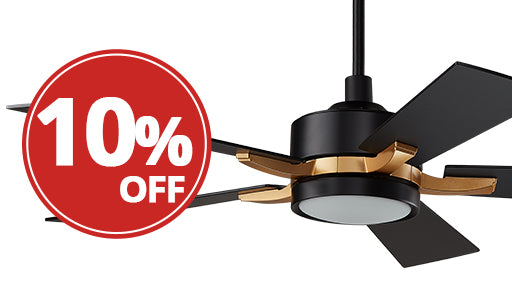Deciding to update or replace a ceiling fan can instantly transform the look and feel of a room, making the task of learning how to remove a ceiling fan a valuable skill for homeowners and DIY enthusiasts alike. Not only does this process pave the way for aesthetic enhancements, but it also provides an opportunity to upgrade to more energy-efficient models, contributing to both cost savings and environmental conservation. This task, while seemingly daunting, can be accomplished with the right guidance and tools, ensuring the safety and efficiency one aims for.
This guide is meticulously designed to walk readers through every step of the process, from gathering the necessary tools and materials to the safe removal of the old ceiling fan. It aims to equip the reader with the knowledge to not only remove ceiling fans with confidence but also prepares them for subsequent tasks such as replacing a ceiling fan or how to replace ceiling fan components. By following a clear, step-by-step approach, this guide intends to demystify the entire process, making what might appear complex and perilous into a straightforward and manageable project.
Gathering the Necessary Tools and Materials
Tools Needed

- Screwdrivers: Ensure a selection of Phillips and flathead screwdrivers is available. Different sizes and lengths will aid in reaching and turning screws with ease.
- Wire Stripper/Cutter: Necessary for handling the wiring during the removal process.
- Voltage Tester: Essential for ensuring that the power is completely off, preventing any risk of electric shock.
- Ladder: A sturdy ladder is required to safely reach the ceiling fan. Ensure it is stable and appropriate for the ceiling height.
- Adjustable Wrench and Pliers: These tools will assist in loosening and tightening various components of the ceiling fan.
Materials Needed

- Wire Nuts and Electrical Tape: For safely capping off electrical wires once the fan is disconnected.
- Safety Rope (if applicable): Useful for securing the fan during removal to prevent it from falling.
Safety Precautions

Always start by turning off the power at the circuit breaker. Double-check that the power is completely off using the voltage tester at the switch and the fan's wiring.

Never overreach on a ladder. If the fan is heavy or awkward to handle, having a helper to stabilize the ladder or assist in supporting the fan's weight is advisable.

Before touching any wires, use the voltage tester to confirm there is no power coming from an unexpected source. This is a critical step to ensure your safety throughout the process.
Removing the Old Ceiling Fan
Turn Off the Power
- Initially, ensure the safety by turning off the power at the circuit breaker. It's crucial to verify that electricity is fully disconnected to avoid any risk of electric shock.
- Use a voltage tester to double-check that there is no power flowing to the ceiling fan. This step is essential for safety and should not be skipped.
Remove the Fan Blades and Light Fixtures
- Start by removing any light fixtures or globes attached to the ceiling fan. This may involve unscrewing the globes or covers and carefully setting them aside. For detailed instructions, check out this guide on how to replace ceiling fan light cover.
- Proceed to unscrew the fan blades from the motor housing. It's advisable to have a helper to hold the blades if they are heavy or awkward to manage.

Removing Light Fixtures

Proceed to Unscrew the Fan Blades

Remove the Fan Blades
Disconnect the Wiring
- Identify the screws securing the light kit to the fan housing and remove them. This may require a helper to support the light kit as it is detached.
- Locate the wires connecting the ceiling fan to the ceiling and remove the wire nuts or caps that secure them. Ensure to cover the ceiling wires with wire nuts or electrical tape after disconnecting.

Take Down the Old Fan
- Support the fan and carefully slide the ball at the end of the downrod out of the mounting bracket. This step might require assistance to safely lower the fan.
- If a safety chain is present, unhook it to detach the fan completely.
- Finally, remove the mounting bracket from the ceiling electrical box by unscrewing it. Keep the bracket and screws for potential future use.
Conclusion
Through this guide, we have navigated the seemingly complex yet essential task of removing a ceiling fan, laying out each step in a methodical manner to empower homeowners and DIY enthusiasts. From the initial preparation, ensuring safety measures are in place, to the meticulous disconnection and removal of the fan, this guide aims to provide the knowledge and confidence required to tackle this project with ease. The emphasis on using the right tools and adhering to safety precautions underscores the importance of a careful and informed approach to DIY projects.
FAQs
How Can You Detach the Ceiling Fan's Head?
To remove the head of a ceiling fan, you generally need to start by disconnecting it from the power source. This involves turning off the power at both the wall switch and the circuit breaker. Following this, you may need to remove any light fixtures, fan blades, and disconnect the wiring. The process ends with taking down the ceiling fan bracket that holds the fan to the ceiling.
What Are the Steps to Remove a Hunter Ceiling Fan?
Removing a Hunter ceiling fan involves several key steps:
- Power Off: Ensure the power is switched off at both the wall switch and the circuit breaker for safety.
- Light Fixture Removal: If the fan has a light fixture, take it off.
- Blade Detachment: Proceed to remove the fan blades.
- Wiring Disconnection: Carefully separate the connected ceiling fan wiring.
- Bracket Removal: Finally, remove the ceiling fan bracket that secures the fan to the ceiling.
How Do You Dismantle a Flush-Mount Ceiling Fan?
To dismantle a flush-mount ceiling fan, follow these instructions:
- Power Shutdown: Start by turning off the fan's power at the circuit breaker.
- Light Removal: If your fan includes a light kit, remove any globes or covers, followed by the light bulbs.
- Blade Detachment: Remove the fan blades next.
- Canopy Removal: Take off the canopy to expose the mounting hardware.
- Wire Detachment: Carefully detach the wires.
- Fan Removal: You can now remove the fan from the ceiling.
- Mounting Bracket Removal: The last step is to remove the mounting bracket.
How Do You Remove the Blades From a Ceiling Fan?
To remove the blades from a ceiling fan, you typically need to locate the screws or bolts that secure each blade to the motor or blade holders. Unscrewing these will allow you to detach each blade from the fan. It's important to hold the blade while unscrewing to prevent it from falling.
















